March 2020 finds your host happily busy back in the shop. There is only so much toilet repair (Fall 2019) that an artist can take! Several weeks’ work in January transformed the choked-off sounding and pale Nr 3 Bajoni 44″ model. Now the Italian poplar and spruce bass is a great sounding and playing bass, though it’s still pale.
The work was performed in several stages. 1) Open, regraduate to uniform and less bulky thicknesses, close. New soundpost. 2) Open, slim down the existing bass bar in width and height, close. 3) Open, remove the bass bar, trim and refit it at the 3/7 location called for in Sacconi’s book, close. 4) Plane fingerboard with the help of Joey Naeger’s complex geometry guidelines. 5) New bridge and soundpost. 6) Adjustment with my friend and colleague John Lemoine lining up everything to the mm. All of this work was documented for a forthcoming scientific paper on impulse response measurements I made during the process. Look for this work at the 2021 ISB in Lincoln, Nebraska.
It’s a really nice instrument now, and I’m using it for gigs. The main ingredient that was missing the first time around was time. I was rushed to get the thing done in time for the 2019 ISB meeting in June, and the oil varnish takes a long time to cure. the second ingredient was perhaps overconfidence, since the thickness of the plates was honestly sloppy. No longer…
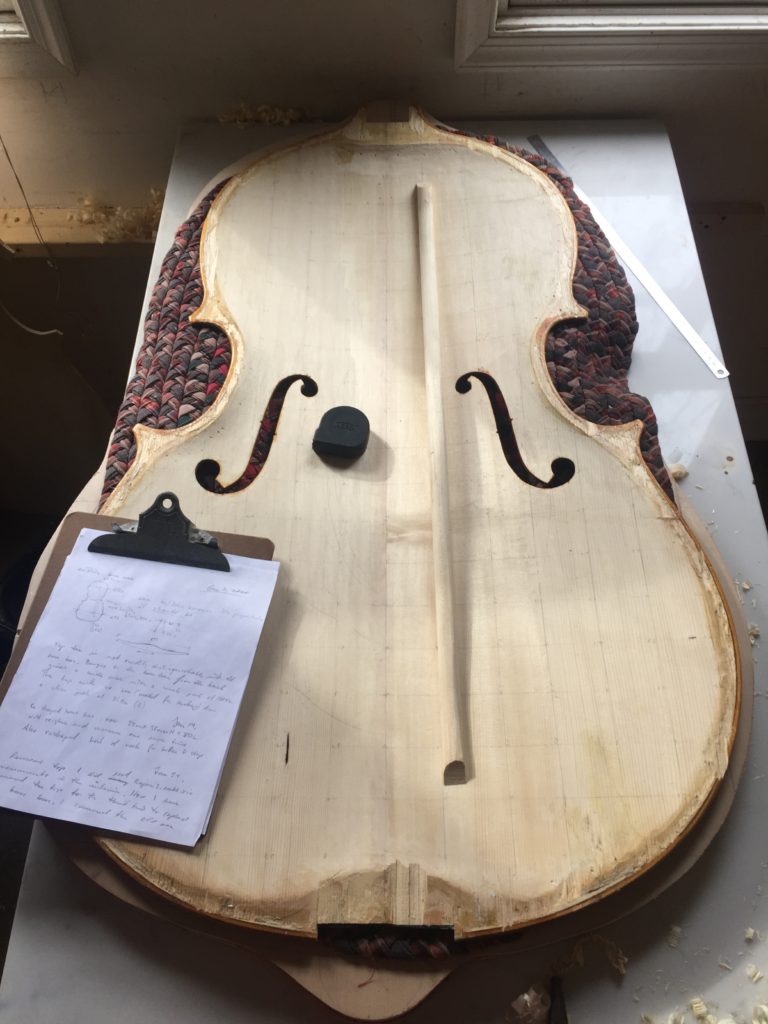
Taking careful notes on the thicknesses 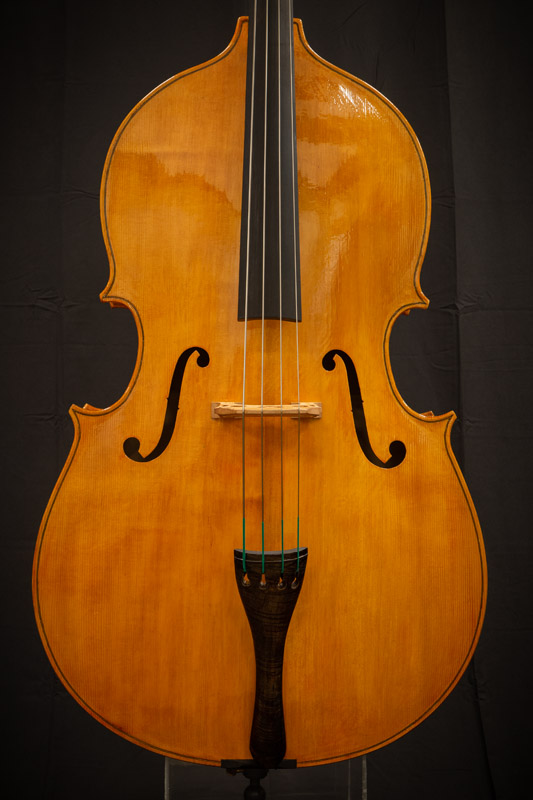

Now that Nr 3 is an enjoyable bass, I had time to go back to Nr 2. It’s also a 44″ Bajoni model, but with European flamed maple and the same Italian spruce. From the moment I first strung it up it has been a cannon of an instrument and I have used it constantly since then for almost all of my shows.
I cleaned up much of the intentionally rough scroll- and top-work, which the 2017 ISB judges criticized quite a bit, with a sharp scraper and removed the varnish with a lot of denatured alcohol. Like all my varnish, I made the original shellac and alcohol finish from scratch. There are a few qualities about that varnish I liked. It was tough, went on evenly and had the right plasticity, but it wasn’t very transparent. For years I’ve referred to its hue as “urine-colored,” so it was about time to change that. I’m now putting the finishing touches on the new mahogany-colored spirit varnish, also made with nothing but natural siam seedlac, elemi, sandarac and Everclear alcohol, and a top caot of dewaxed transparent shellac. This instrument will soon be for sale, so stay tuned!
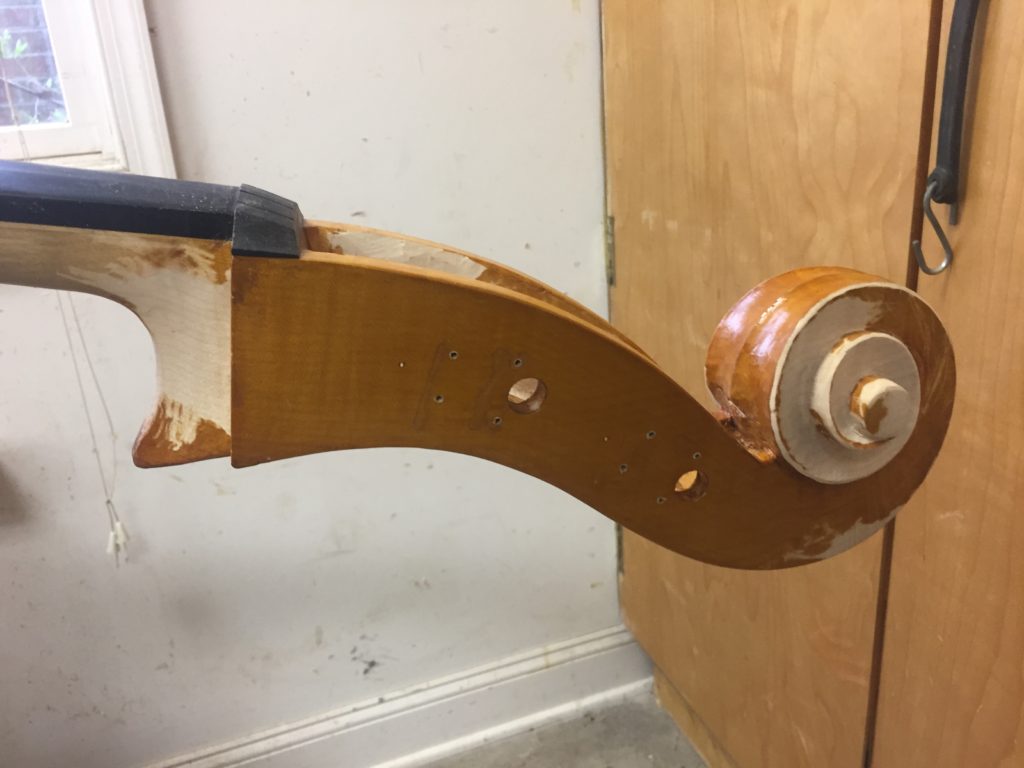
Smooth… 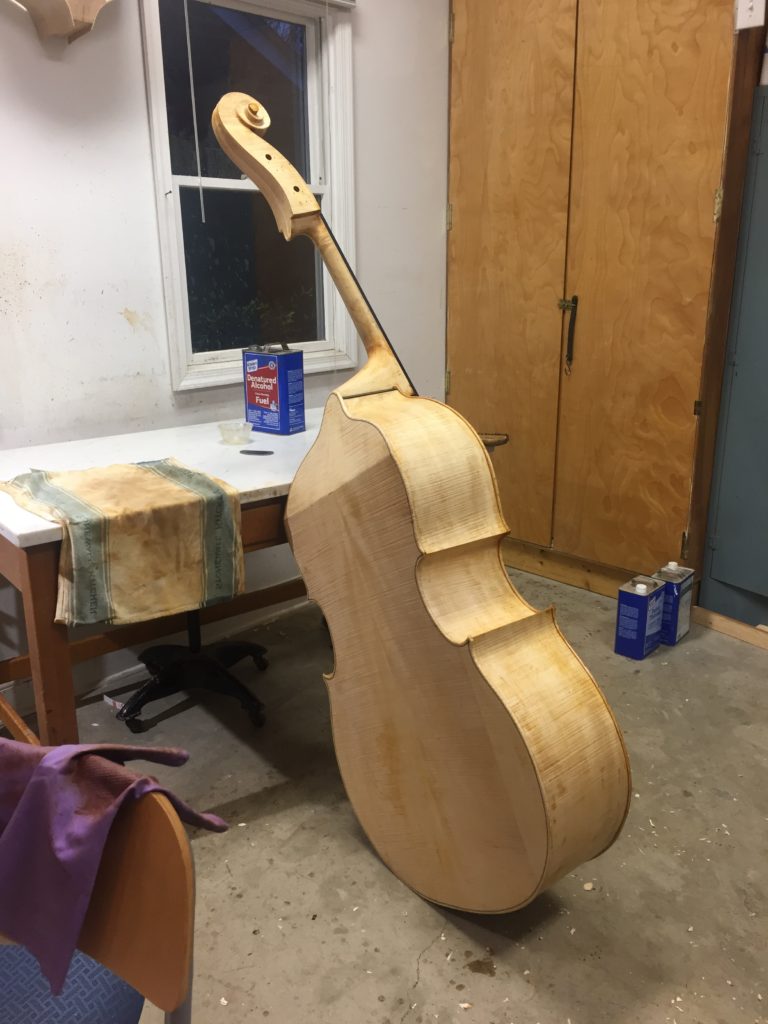
Stripped 
After treatment with wheat size… 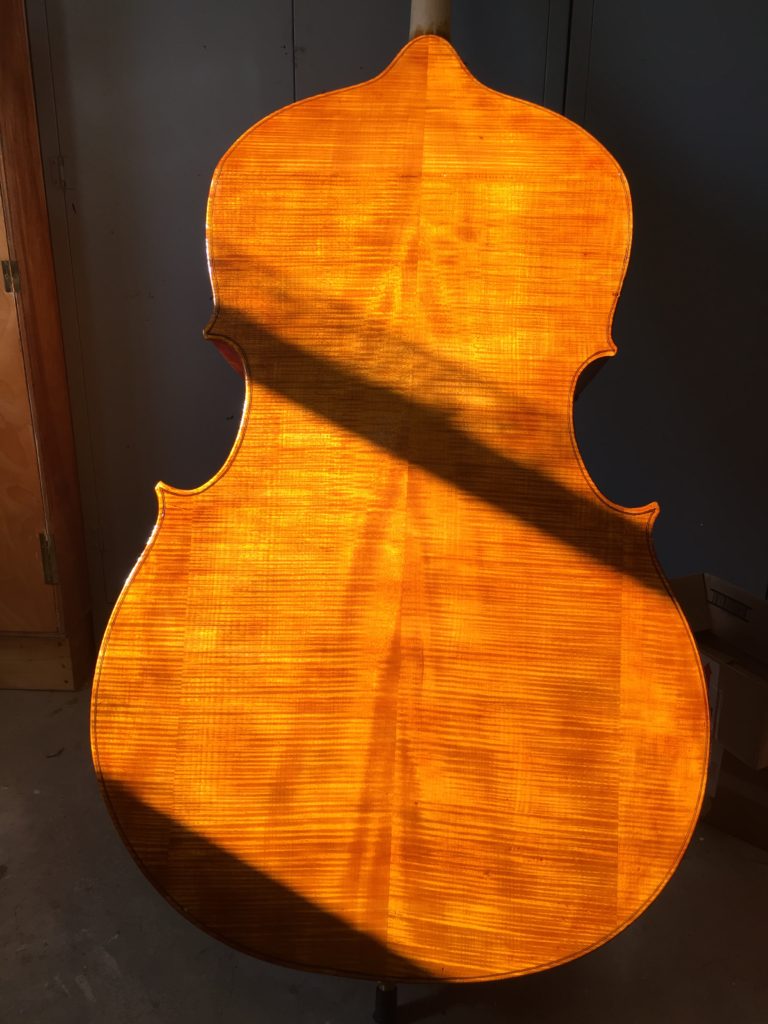
…hello deep, rich mahogany!
